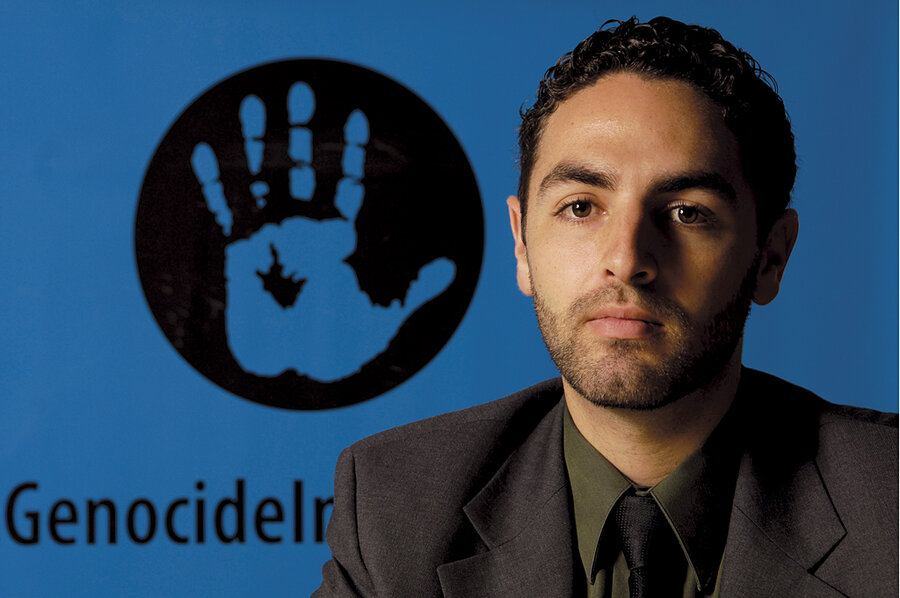Leadership: For this non-profit organization, leaving was leading
Loading...
| New York
Successful mavericks can have more in common than vision: Often, they're obsessed. Their drive keeps them focused and convinces others to join in the mission, but it can also be a liability. A leader who hangs on too long can kill a venture.
Leaders of "for-profit enterprises have a little extra push," says Cheryl Dorsey, president of Echoing Green, which invests in nonprofit leaders. "They have the specter of a big financial payout. That can coax people along."
But, she says, "there's a less clear exit path for successful founders" of ventures that never intended to make big money, she says. The tendency of founders to cling to their organizations is known in the nonprofit world as "founder's syndrome."
It's a problem that Mark Hanis, a young social entrepreneur, knows well. As a senior at Swarthmore College in 2005, he and classmates wanted to raise money for peacekeepers in Darfur, the western region of Sudan. Their idea quickly snowballed into the Genocide Intervention Network (GI-Net), a grass-roots antigenocide nonprofit organization.
Mr. Hanis and his colleague Sam Bell moved to Washington, D.C., after college and set themselves up in borrowed office space with the mission of convincing legislators to do something about Darfur.
"I think because we knew we were mavericks, we really had to understand the issues and know who the players were," Hanis says. "If we were insiders, we might not have come up with ... innovative approaches" to traditional advocacy.
By 2010, Hanis and his team had built a $3.5 million nonprofit engaged with hundreds of communities across the country to pressure American leaders to prevent or alleviate atrocities around the world.
They'd also found themselves with competition from other similarly minded groups. Competition between organizations, private or not-for-profit, often becomes fierce, as groups compete for finite resources and media and other attention. Hanis and his group took an unusual approach: cooperating with their competition – and ultimately joining them.
"If you're a maverick, you've got to be able to play in the same sandbox," he says. "There's no social issue where you're the only player in the landscape, and you can't solve it on your own. If you could, most likely it would already be solved."
Last year, Hanis entered into negotiations with Save Darfur, arguably the most powerful and recognizable player on the issue, to merge the two organizations.
"We saw this as an exciting opportunity to strengthen the sector, even though GI-Net was fine financially," he says. "It might be part of our maverick attributes. It's rare that you hear of mergers when it's not out of financial need or other crises; it's rare that people see that as part of their strategic plan."
When the groups merged, Hanis decided to bow out. The high profile of the newly merged group, United to End Genocide, attracted high-powered leadership interest. Hanis, long worried about who his successor might be, says he was "thrilled" when Tom Andrews, a former Democratic congressman from Maine, expressed interest. Mr. Andrews, who has extensive foreign-affairs experience, now leads the organization.
It may have been easier for Hanis to choose to leave than for many other founder-leaders, mavericks or not, says Hanis. He's young; he has no mortgage and no kids; and he's got time left to redefine himself, professionally and personally.
"The most common response I've gotten is, 'This is your baby. Aren't you sad?' or 'Why did you do it?' " Hanis says. "I really enjoyed working to help build this, [but] it was compelling to get a fresh face, fresh ideas. To me, it didn't feel like a loss ... to hire someone more experienced and take it to the next level."
Meanwhile, Hanis is weighing his options: attending graduate school, accepting lucrative private-sector offers on the table, starting another organization of his own. He's also reading a lot of books about happiness and considering whether he's one of those guys who gets his thrills from the journey, rather than the destination.





